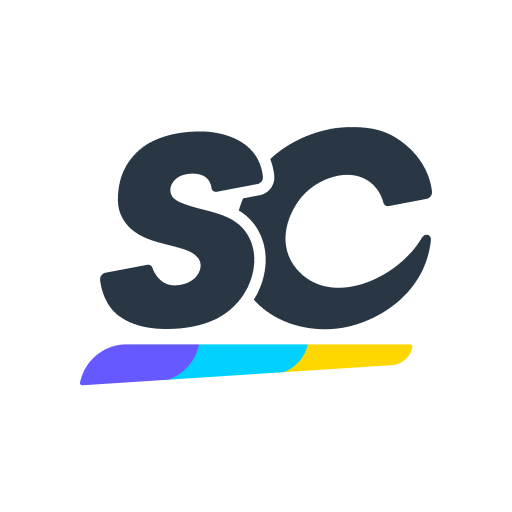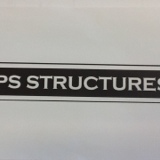Information
-
SOP#
-
SOP Title
-
Site
-
CREATION DATE
-
Revision Date
-
Revision Number
-
Procedure Author
-
Site Address
Procedure Overview
-
Work Areas Affected
- Interior
- Exterior
- Mechanical Room
- Common Area
- Roof
- Electric Room
- Other
-
Define OtherArea
-
Detailed Location Information - Specific Information of areas impacted. Room Numbers, Floor Numbers, etc.
-
Select All Affected Systems
- Cooling
- Heating
- Electrical
- Plumbing
- Internet
- Communications
- Fire Suppression
- Fire Detection
- Other
-
Define Other Systems
-
Is Equipment Being Affected?
Equipment
-
Equipment I.D.
-
Equipment Manufacturer
-
Equipment Model Number
-
Equipment Serial Number
-
Equipment Photo
Personnel Required:
-
Determine the Technical position needed to perform this work
Technical position
-
Select Position / Trade
- Plumbing
- Electrical
- HVAC
- Labor
- Painter
- Carpentry
- Other
-
Define Other Position
-
Skill Level Requirement
- Apprentice
- 3rd Year Apprentice
- 4th Year Apprentice
- Journeyman
- Foreman
- Other
-
Define Other Skill
-
Define Responsibilities of this position
-
Determine the Management / Leadership Position staff required to perform this work
Management / Leadership Position
-
Select Management / Leadership Position
- Regional Director
- Facility Manager
- Assistant Facility Manager
- Chief Engineer
- Assistant Chief Engineer
- Other
-
Define Other Management / Leadership Position
-
Define Responsibilities of this position
-
Determine Additional Support Positions
Additional Support Position
-
Select Additional Support Position
-
Define Other Additional Support
-
Define Responsibilities of this position
Scope, Purpose and Responsibilities
-
Provide an overview of the work to be performed, estimate of time to complete, and summarize expected impacts while performing the work as well as expected outcomes of completing work.
-
Scope of Work - Overview of the Work to Be Performed. What are we doing?
-
Purpose of Work - Why are we doing the work?
-
Goal - What is the expected result?
Impacts to the Facility
-
Detail of Impacted Facility Systems
-
Main Utility Equipment
-
Provide Details of specific impact.
-
Emergency Generator System
-
Provide Details of specific impact.
-
Cooling System
-
Provide Details of specific impact.
-
Heating System
-
Provide Details of specific impact.
-
Fire Monitoring System
-
Provide Details of specific impact.
-
Fire Detection System
-
Provide Details of specific impact.
-
Fire Suppression System
-
Provide Details of specific impact.
-
BMS - Building Management System
-
Provide Details of specific impact.
-
Security System
-
Provide Details of specific impact.
-
General Power and Lighting Systems
-
Provide Details of specific impact.
-
LOTO (Lock-out / Tag-out) Required?
-
List Specific valves, circuit breakers, panel numbers, etc.
LOTO Item
-
Add Photo of the LOTO Item
Supporting Documentation
-
Identify all documents required to support successful completion of this work.
Example: OEM manual, site safety plan, Emergency generator shutdown procedure, communication informing key stakeholder of work to be performed, hot work permits, etc.
Safety Requirements
-
All personnel involved in the procedure have read and agree to adhere to the SLAC “Worker Safety and Health Program.
-
Are there potential hazards?
-
Potential Hazards (check all that apply).
- Electrical
- Impalement
- Sharp Edges/Pinch points
- Pressure (Water/Pneumatic)
- Chemical
- High Temperature
- Low Temperature
- Trip / Fall
- Dust
- Other
-
Define "Other Hazard"
-
Personnel Protective Equipment (PPE) required. Check all that apply
- Safety Glasses
- Flash Proof Safety Glasses
- Face Shield
- Self-Retracting Life Line
- Arc Flash PPE
- Cut Resistant Gloves
- Chemical Resistant Gloves
- Hard Hat
- Dust Mask
- Chemical Apron
- Hearing Protection
- Steel Toe Boots
- Harness and Lanyard
- Respirator
- Radio
- Other
-
Define "Other" Personal Protective Equipment
Procedure Risks, Contingency Plans, & Assumptions
-
Refer to Site Specific Facility Operations Manual (FOM) Maintenance Management Plan (MMP) Risk section for Level of Risk definitions.
Assessing Risk
Use the Risk Assessment Code (RAC) matrix below to assess the risk of each hazard. To use this matrix:
• Find the “severity” or the worst-case outcome of a mishap from the hazard along the left side of the matrix. The possible consequences are:
Class I – Catastrophic. A condition that may cause death or permanently disabling injury or facility destruction.
Class II – Critical. A condition that may cause severe injury or occupational illness, or major property damage to facilities, systems or equipment.
Class III – Moderate. A condition that may cause minor injury or occupational illness, or minor property damage to facilities, systems or equipment.
Class IV – Negligible. A condition that could cause the need for minor first-aid treatment, but would not adversely affect personal safety or health; damage to facilities, systems or equipment more than normal wear and tear level.
• Find the “likelihood” for mishap to occur across the top of the matrix. The possible likelihood estimates are:
Likelihood A. Likely to occur.
Likelihood B. Probably will occur.
Likelihood C. May occur.
Likelihood D. Unlikely to occur.
Likelihood E. Improbable.
• Find the RAC in the box where the “consequence” and “likelihood” cross.
SEVERITY CLASS (I-IV) LIKELIHOOD ESTIMATE (A-E)
A B C D E
I 1 1 2 3 4
II 1 2 3 4 5
III 2 3 4 5 6
IV 3 4 5 6 7
For new procedures, establish mitigation procedures to bring the RAC into a green level (RAC Code 4-7) to the extent possible. RAC codes of 1, 2 and 3 must be reviewed and approved as described below prior to finalizing the Operating Procedure.
If the RAC is… Then the risk is . . .
1 SLAC Director is authorized to accept the risk with adequate justification in rare cases
where critical tests must be done and the risk cannot be reduced.
2 ESH Division Director or Chief Safety Officer is authorized to accept the risk with adequate justification.
3 ESH Program Manager or equivalent management is authorized to accept the risk with adequate justification.
4–7 Acceptable with controls – Facility Manager and EHS Coordinator is authorized to accept the risk with adequate justification. -
Identify each risk and contingency plan.
Risk
-
Risk Details
-
Specific to the risk noted above, what is the plan to deal with the risk should it come to be realized during the course of the work?
-
Contingency Plan for Risk
-
Supporting Photos
Notification
- Notify SUSB Facility Management when work begins and ends.
-
Name of Person to be Notified
-
Title of person to be Notified
-
Email of person to be notified.
-
Mobile Phone Number of person to be notified.
Procedure Details
-
List the very specific steps that will be taken to complete this work. This should include every action taken from arrival on site to leaving the site and post notification to key stakeholders.
A Dry Run of the procedure should be conducted with those that will be performing the work to ensure nothing is missed.
Notes: 1. Verify that Change Management approval has been received prior to performing
work.
2. Log Time for Major Steps
3. Notification of impact to timeline
Step
-
Step Detail
-
Include any photos to help demonstrate this step.
-
Date and Time this step was completed
-
Initials of person performing the work
Procedure Approval
-
Dry Run Performed (Physical Walkthrough)
Note: Vendor needs to be involved in walkthrough with FM TECH REP) -
Management Representative Approval
Management Approval
-
Management Representative Name and Title
-
Management Representative Signature
-
Date of Management Representative signature
-
Date of Management Representative signature
-
Technical Representative Approval
Technician Approval
-
Technical Representative Name and Title
-
Technical Representative Signature
-
Date of Technical Representative Signature
-
Date of Technical Representative Signature
Notes
-
Day of work instructions and Notes/Findings:
Note










